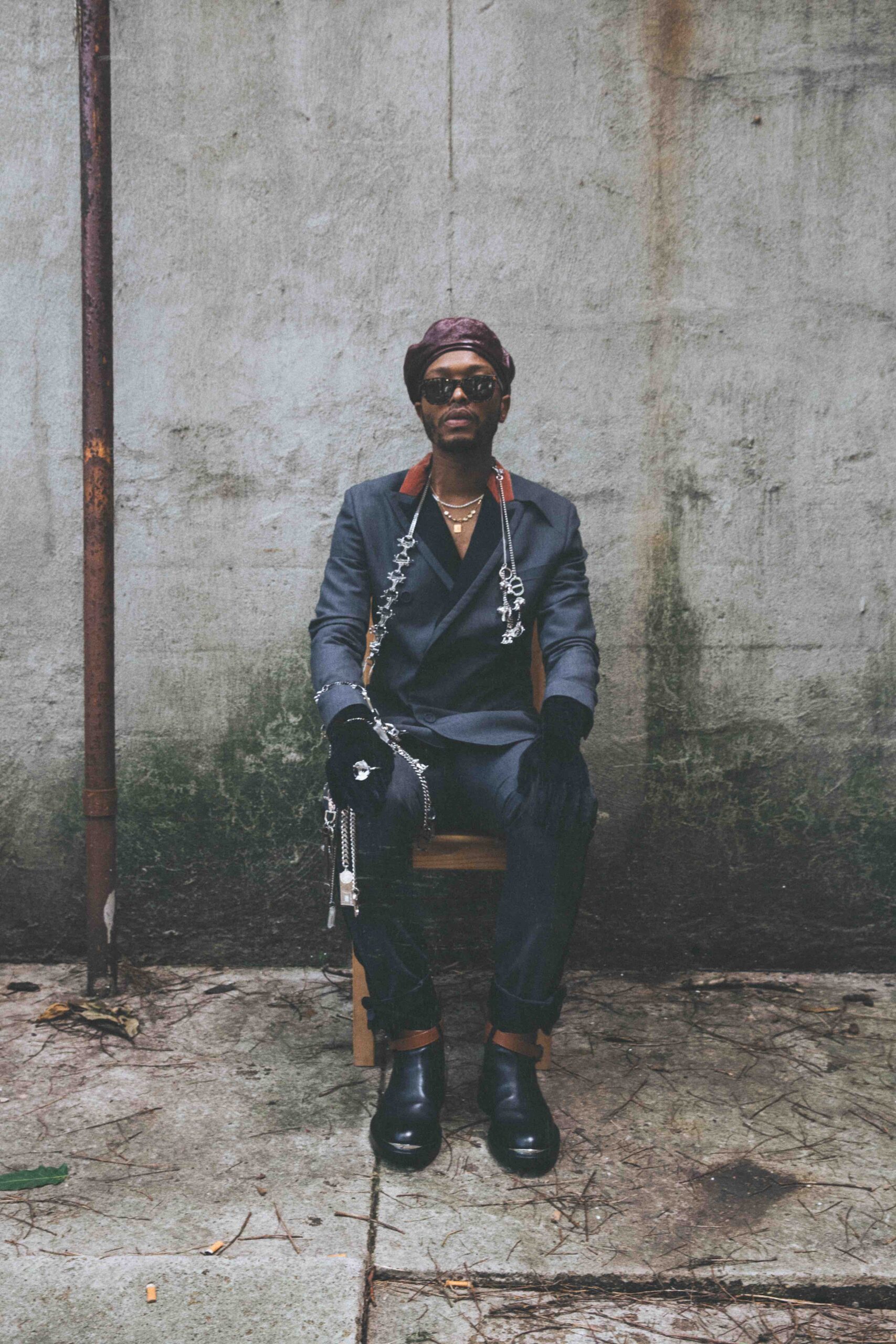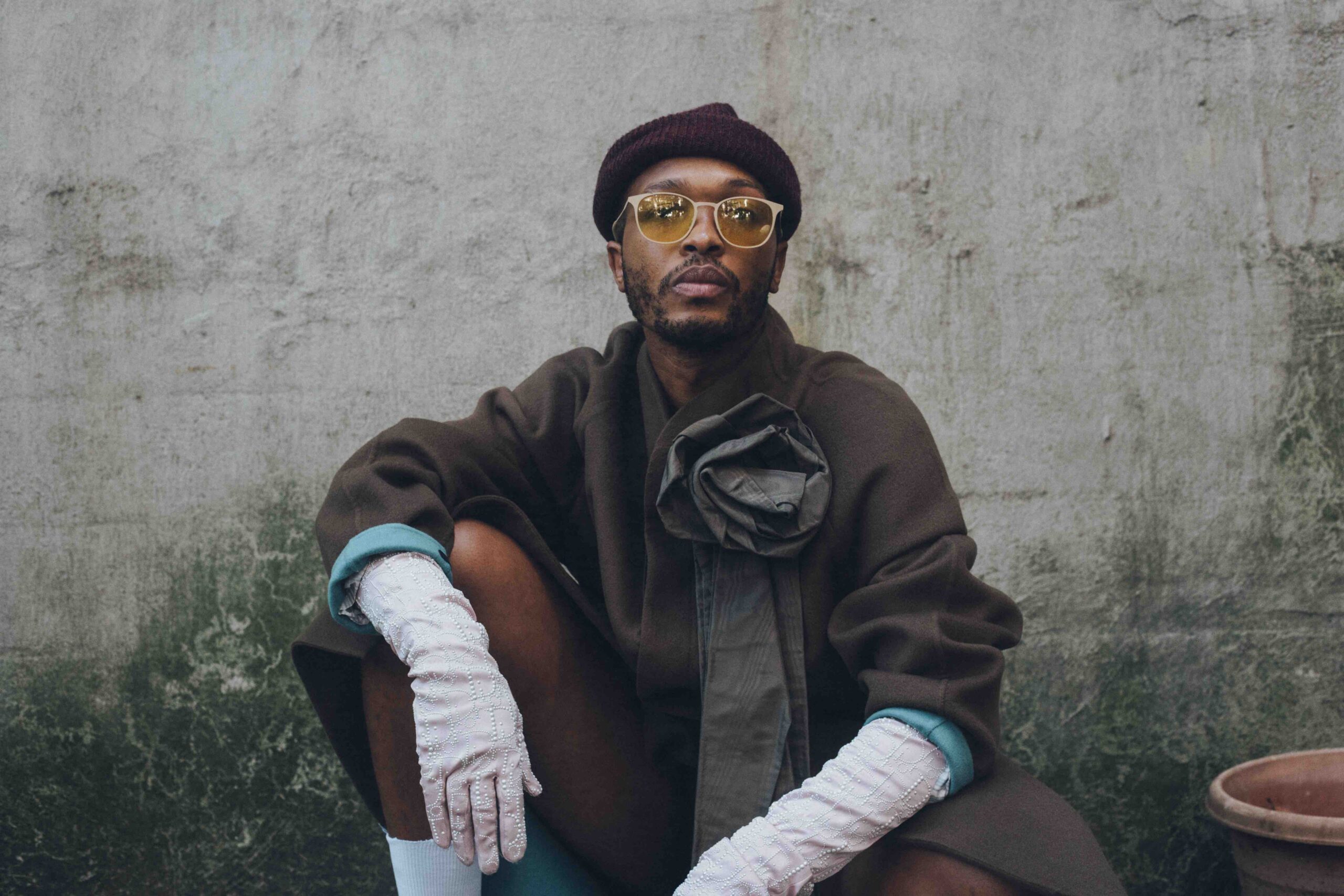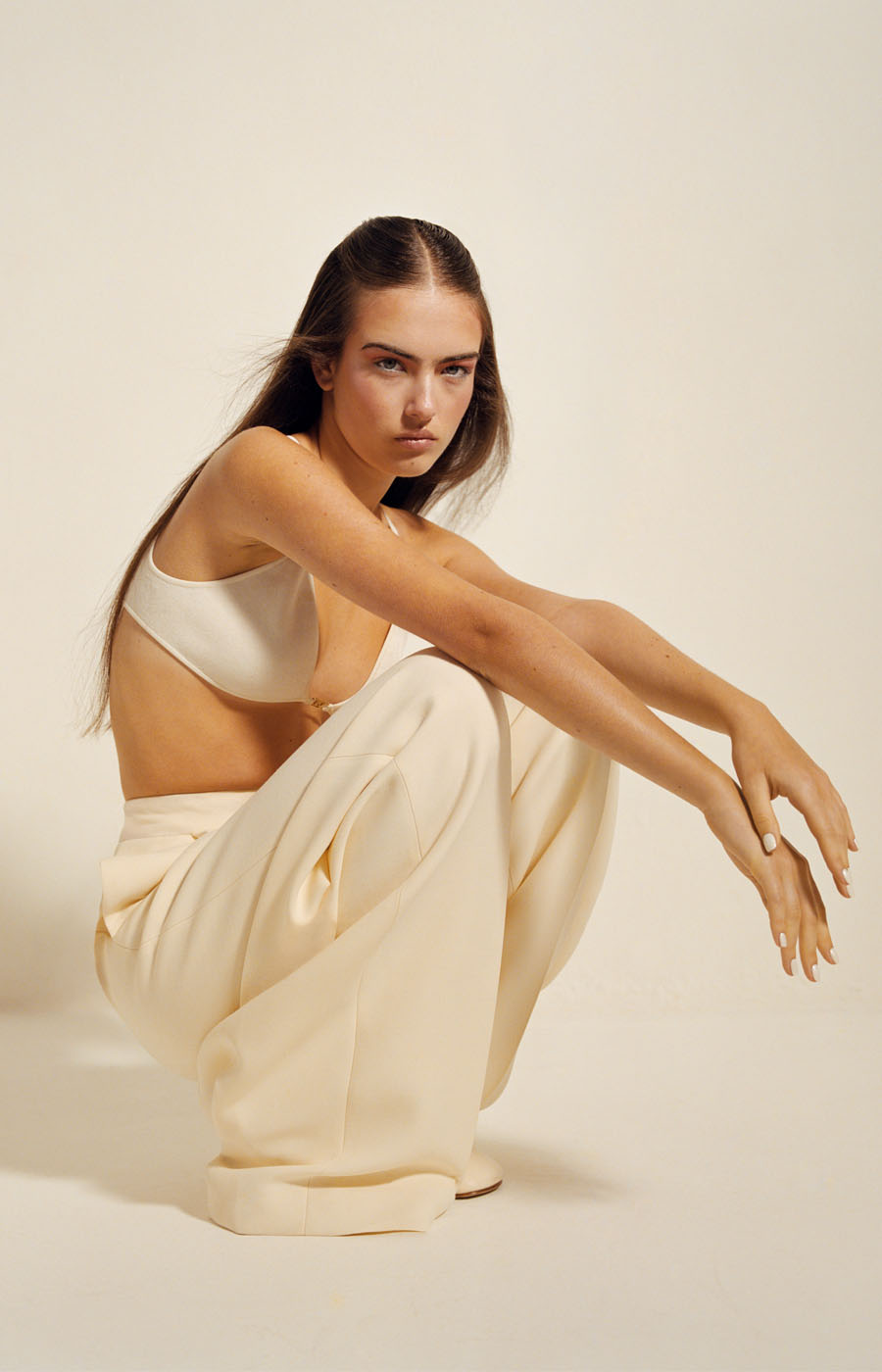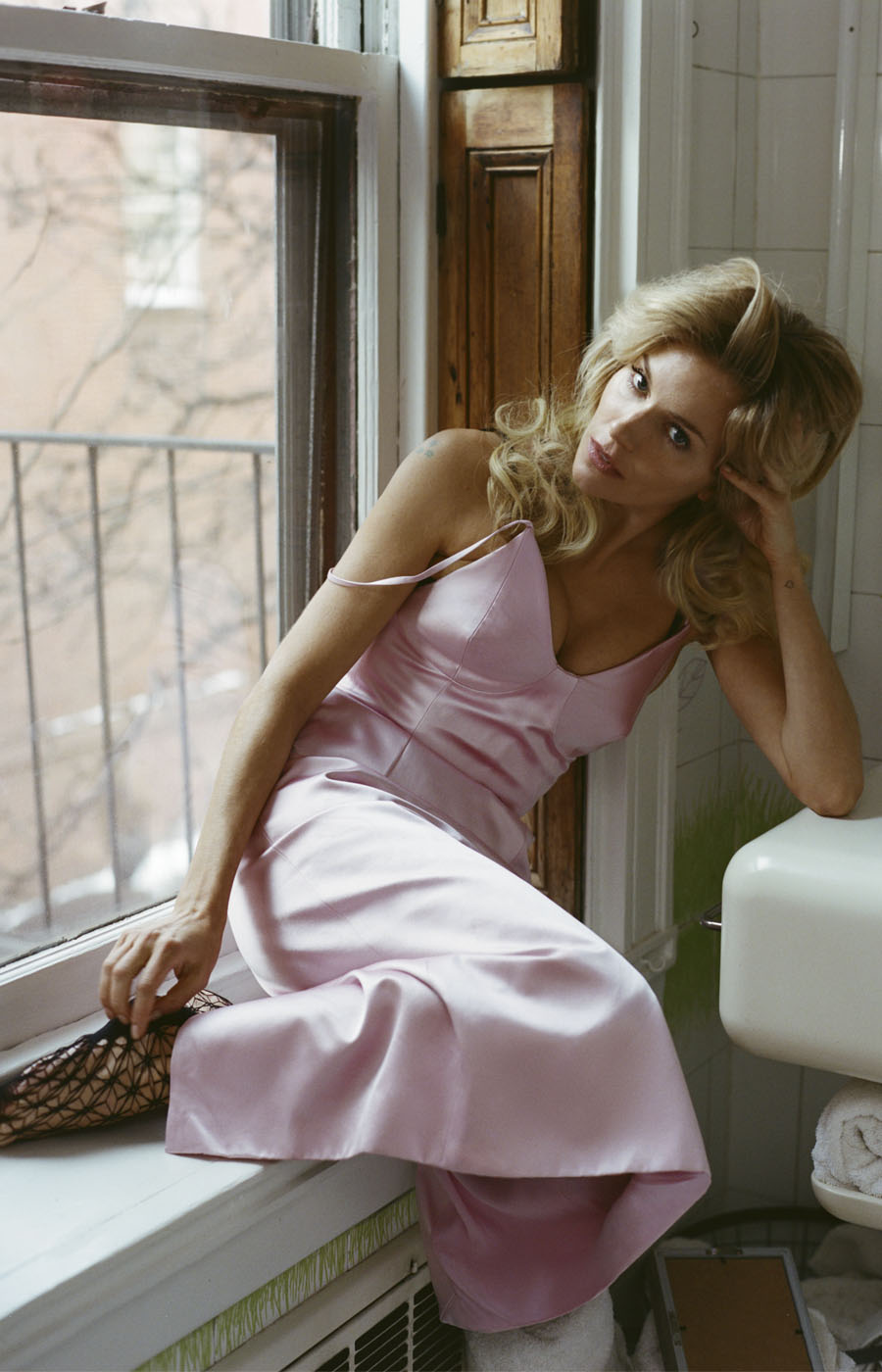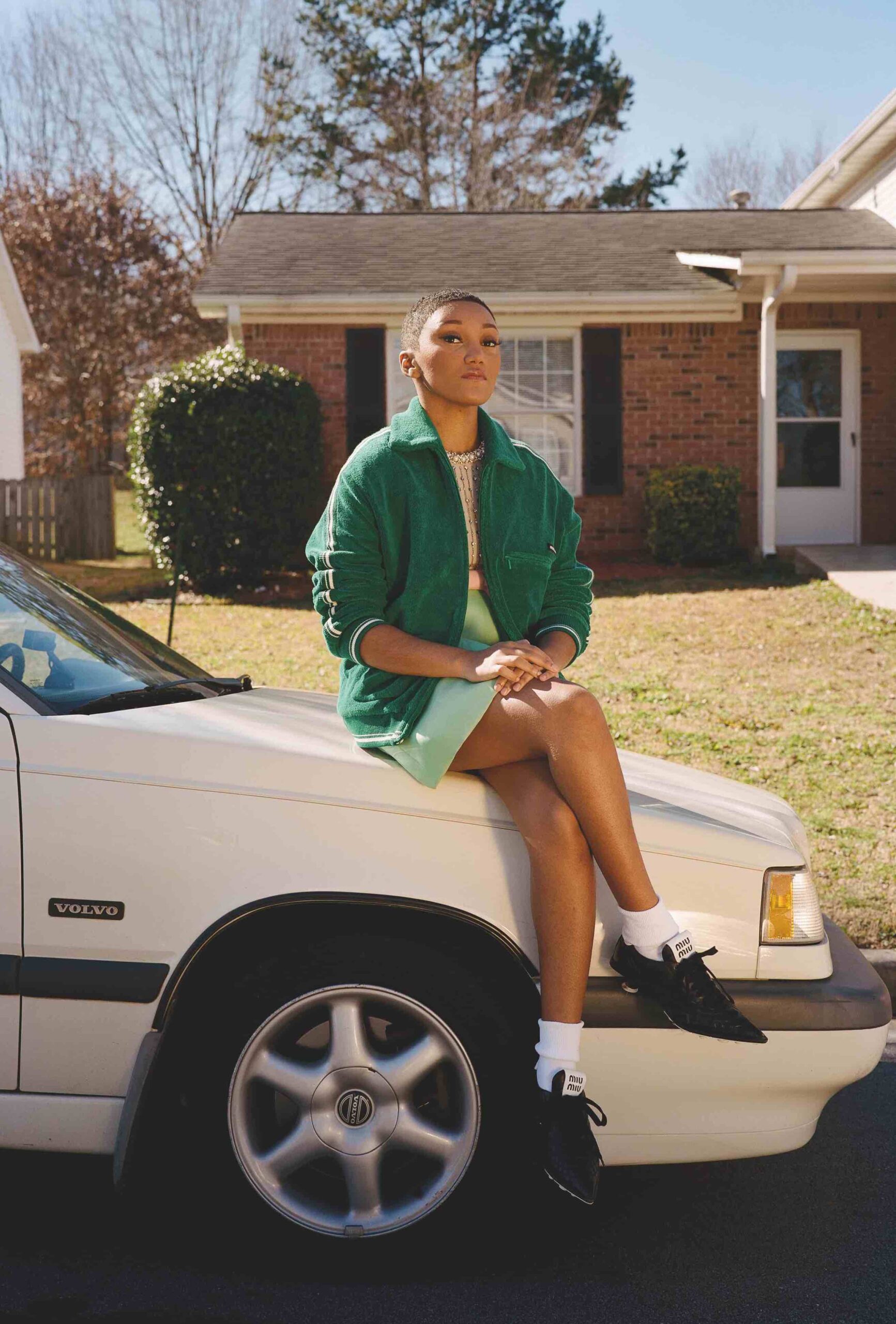EE How and why did you choose the photographers that you did?
AS What I had been seeing was all these black photographers from around the world that were thinking about their self-presentation and identity, but through fashion. Moreover, in the case of these 15 photographers in my book, they were drawing on the history of photography itself to make an argument in this in-between space of art and fashion. Because — and you also touched this in your book — when you think about the history of photography, a lot of our images have not been properly discussed. And even when you have a black body, there are times when it’s been filtered through these lenses of white history and white knowledge. And so I just wanted to make sure that this generation of photographers was: (a) been seen, and (b) having their concerns and their practices recognized in their own world from inside spaces of their community.
EE First of all your book is a beautiful book. You layout in a really important and necessary schema the evolution of the practice of these photographers. And it feels to me really important and exciting to recognize their work and set it in context. How much did you think about any potential risks of grouping them together under the title The New Black Vanguard?
AS It’s funny because I was aware that it was a title that could for sure create some problems. Some people loved it while some people, some of the photographers for example, did not like it at all.
EE Yes, because when you put together a group of people and give them a title someone in the group is not going to be down with it.
AS So we had that conversation. But I thought that it was important to do this because it was in some ways provocative and in some ways about a claiming of space. If you put the word “new” before something there has to be an “old”, there has to be history. So I was trying to highlight my generation of fashion and kind of art image-makers. But I was also trying to point out the fact that there was a whole history that existed before. Most of these earlier photographers, like James Barnor for example, are being grouped as just art photographers, but those images were not just about art making. So I wanted to honor that generation but also I wanted to look at how might their ideas be percolated in the generations of today and how this present generation of photographers are thinking about them and their ideas.
EE I think one of the beauties of the book is that it makes no distinction about place or location. It’s not important if you’re based in Nigeria or in Switzerland or in Yorkshire or in NY. You’ve been articulating a cosmopolitan sensibility. How did you go about exploring blackness as sensibility?
AS For me, it was about trying to allow as much space as possible for these photographers to speak on their own terms, and making the race one of many concerns rather than singling out race as the most important thing – because it’s often not always the case. When you talk about Nigeria you talk about someone like Ruth Ossai who is part of majority society, a majority-black society. It’s like what does race mean in a context like that? But of course, that does not have the same meaning when you are in London, like Campbell Addy. When you look at those images you are not just seeing race, so I wanted to make sure there was also a way to binding them together that allowed them to then go off and explore all these other things. If you think about Namsa Leuba, she’s kind of thinking about this history of hybridity, this European and African kind of link. She is growing up in Europe and going to the continent and thinking through the ways in which different traditions play out in a dress and the ways in which people are imagining themselves and reimagining themselves, physically but also in this cosmic kind of space, this space of play, space of identity creation, space of masquerade. And her images play on all sorts of things on the ethnographic, on fashion, on ideas of community, customs, traditions. Then you have someone like Ruth who is thinking more about the way popular culture has evolved since the ‘40s and ‘50s in Nigeria. And she’s thinking about the ways that someone like Malick Sidibe and the countless photographers who opened their own photo studios and started to document daily life. There’s a history of these sort of images being discounted unless there are white collectors or galleries who come and build this market around these images and I just wanted to say that these images are being made with certain ownership that the photographers have over what we see.
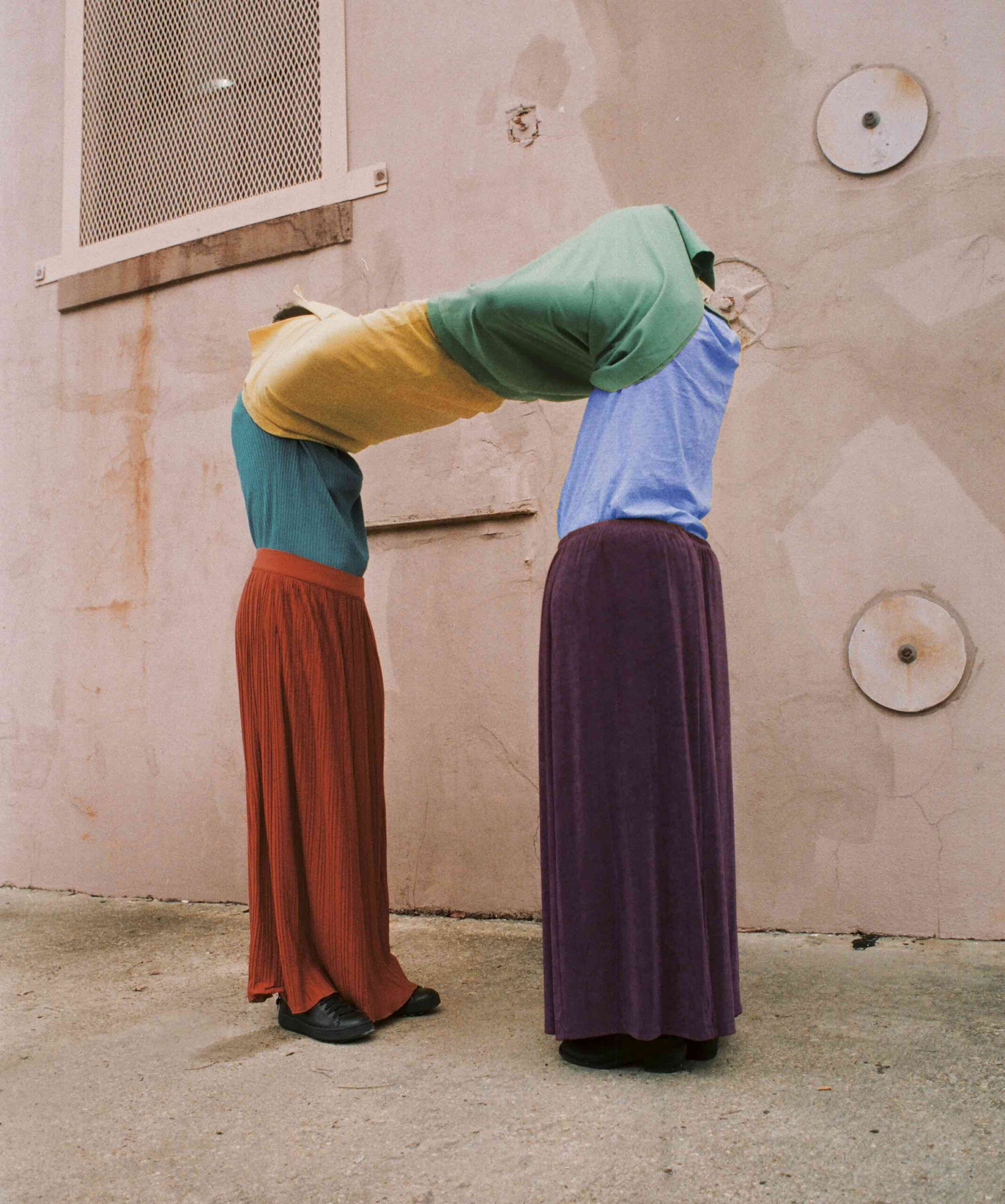
That goes to the idea of all of these white photographers through the Pictures Generation who just made images in these in-between spaces and were allowed a freedom that a lot of black photographers did not have in terms of their image-making. I wanted to also give that sort of freedom that the white photographers have enjoyed to this generation.
EE How do you curate that distinction between art and fashion? Do you even make that distinction? Do you just put it all together? Do you say everything is art?
AS I’m not interested in that distinction because that distinction is about creating markets and making money. It’s largely about insecurity in photography. I thought that I was not going to allow those sort of really outdated ways of thinking, because the photographers weren’t, right? They were not interested in those sorts of boundaries.
EE You made that point when you wrote in your introductory about Tyler Mitchell, how he constructs this deliberately unfashion-like image of Beyoncé for Vogue.
AS It doesn’t have that traditional gloss, but this image is about black motherhood, the laundry line, domesticity, and all of that stuff. That’s going beyond the cover of Vogue as a fashion image to help us push beyond just another glossy image of Beyoncé.
EE In your opinion how much of that was a strategic decision on Tyler Mitchel’s part, as you say to go beyond conventional representations of black womanhood?
AS These distinctions are not in their mind. It is so highly subjective because they’re making the images that they want to make and then telling the world: deal with these images.
EE They’re saying, “Catch up to what I’m doing!”
AS Exactly! I think that is important and that is something that is exciting about the ways in which this generation, this group of photographers is making images. They’re not interested in this game where they have to separate their work.
EE One of my favorite lines in the book comes from your essay, where you say “the black body once an object, is now a sight for new visualization of race, gender, and beauty.” For me, that goes right to the core of what I found you’re thinking about in the book, which is, How do we look at the black body? At the black form? What have we overlooked before and what is it that these photographers are allowing us to see? That seems to me a very exciting proposition.
AS Yes and I think that is what we face when we are seeing these images. We are imagining the black body as universal but within its specificity. My proposition is that yes, these are universal markers, but they are universal markers on their own terms. In the book, I talk about Vogue Italia’s Black Issue in 2008. One of the things that are so interesting about that looking back now, a decade later, is that a lot of those images, although they’re of black women and models, they are produced by white image-makers. Not only that, what you see about that image is all about European fantasy. You’re either kind of an African savage or you’re this kind of civilized European black. Where was the black woman in that? Where was the real depiction? This magazine was sold out, devoted to the black woman, but there it was not an honest depiction of the ways in which she has thought about her own beauty.
We can look back now and see how far we have come in the span of a decade. Now it is unimaginable that someone would devote an issue to black people where the black people would not be making those images.
EE What’s changed? Is it the rise of a New Black Vanguard or is it the times themselves shifting? What’s prompting that kind of change?
AS A lot of different things. The history of photography is a history of technology and I think that social media gave a lot of people platforms. A lot of these photographers started on socials, just taking photos with their phones. And they grew and built audiences around their work. In that way the traditional gatekeepers: museums, curators, galleries, editors, magazines were almost challenged to get with the program or not have space in the future. Social media disrupted things and it also allowed photographers to have more control of their work and more control over collaborations. I think Tyler Mitchell was allowed to say: “here is my idea for Vogue” because he had built a name for himself by building his Tumblr and his Instagram and saying “This is who I am” as a photographer and image-maker. This younger set of artists are a lot savvier over asserting control over the image-making process.
If you put the word “new” before something there has to be an “old”, there has to be history.
EE The New Black Vanguard is about creative power, the criticality of gaze, commercial acumen, and sophistication…
AS Yeah, for sure. This is a savvy group of artists and they had to be because they needed to create their own opportunities when galleries and magazines would not give them to them. They were really savvy about thinking about the past and looking at the opportunities that have been denied to photographers before that they looked up to. Denied to someone like James Van Der Zee. You look at images by him like Couple, Harlem from 1932. And you think: “How did you not get this man to shoot for you?”
EE It’s one of the most important portrait images of the 20th century.
AS Exactly! The previous generation’s fight was to be inside the institution and they saw the institution wasn’t necessarily serving their interests. This generation is playing the game of collaborating with the institution, but then at the same time, they’re building their own sort of institutions. I think that’s how you get the different projects that you see from these image-makers. You can have Tyler on the cover of Vogue and then you have him make videos and other different things. You have them publishing their own books and magazines, someone like Campbell Addy has his own magazine. How do I create and offer the sort of space that I want to? The first meeting that I have ever had with Campbell was in London at Somerset House. I told him: “I’m doing this book and I really want you to be part of it”. What he said to me was that for him it was very important that we do a book like this as soon as possible with a lot of black photographers, so that photographers that are coming after know that we are doing this work.
Each of these photographers shoots in such a distinct way that you know that these are signature images. So I thought that it was important to name the artists that are associated with these aesthetic and visual languages. In previous generations, people just did not get a chance to publish their work and then someone else sees pictures and then incorporates that into their image and then becomes famous for something that was not theirs. So I tried to make sure in my book we know where the aesthetic comes from and which community they belong too and whom to attribute it to.
We did this book really quickly. From the conception of the book to the selling of the book it was only one year, from October to October. And this is possible if people really believe in what you’re doing and are willing to give images rights. I wanted to reflect that sense of community back into the world, and I think this book does that, and not just with the image-makers, but also with the subjects, the hair, the make-up, and everyone that goes into making these images. This project really shows a new kind of brave black world that’s emerging, and for me, that is just unbelievable, really great.
